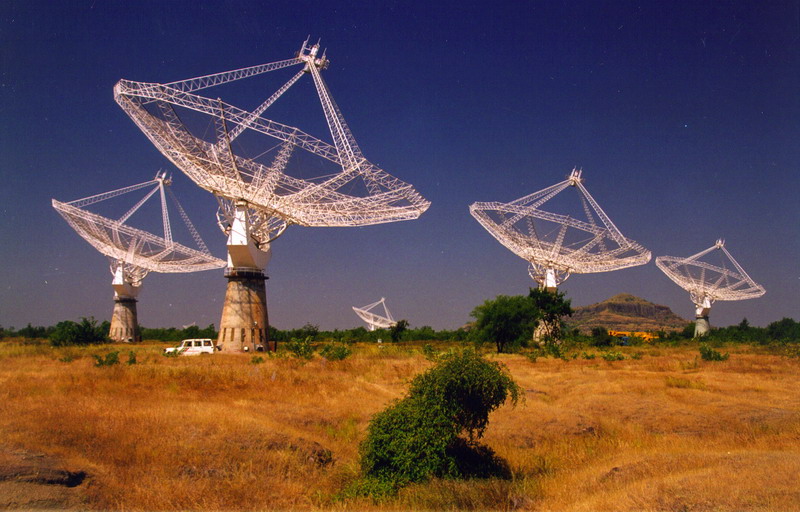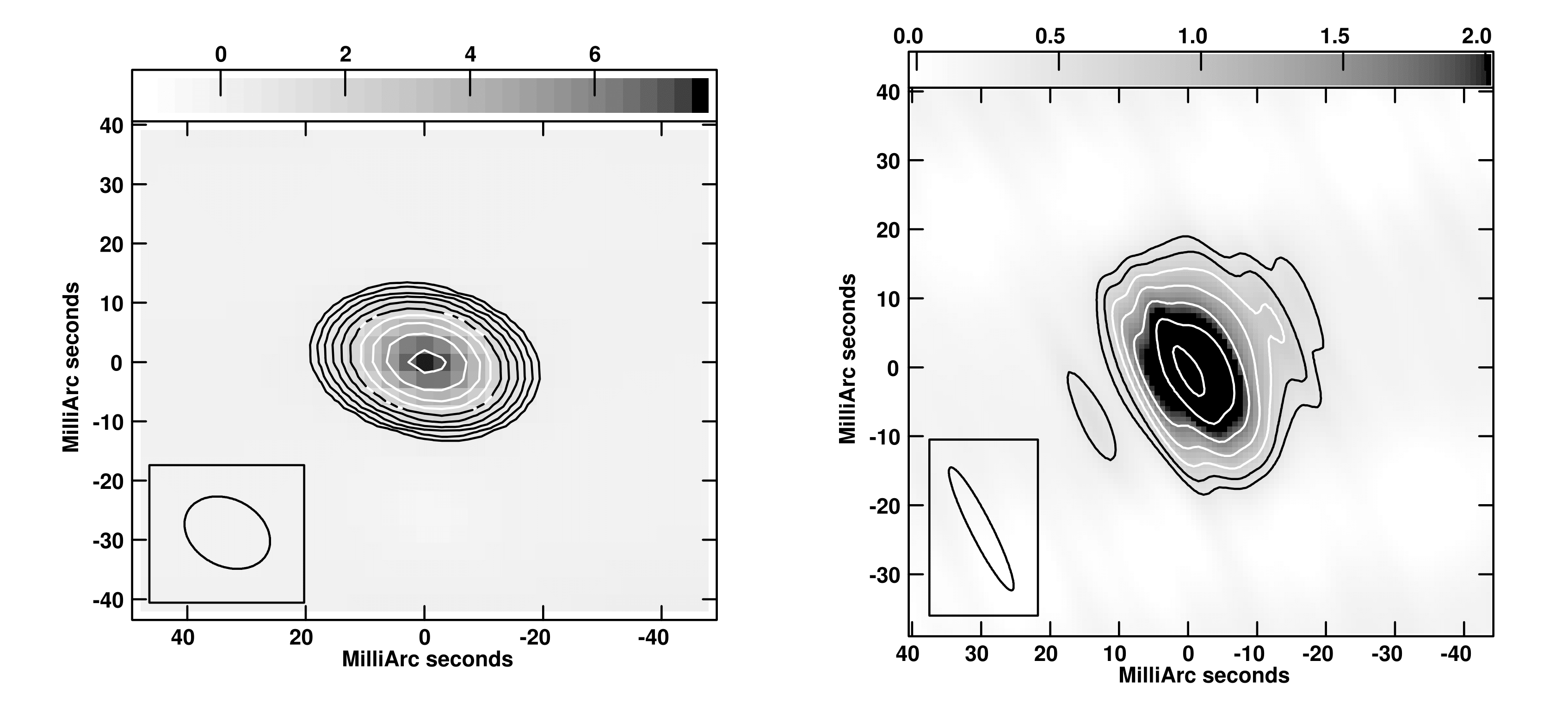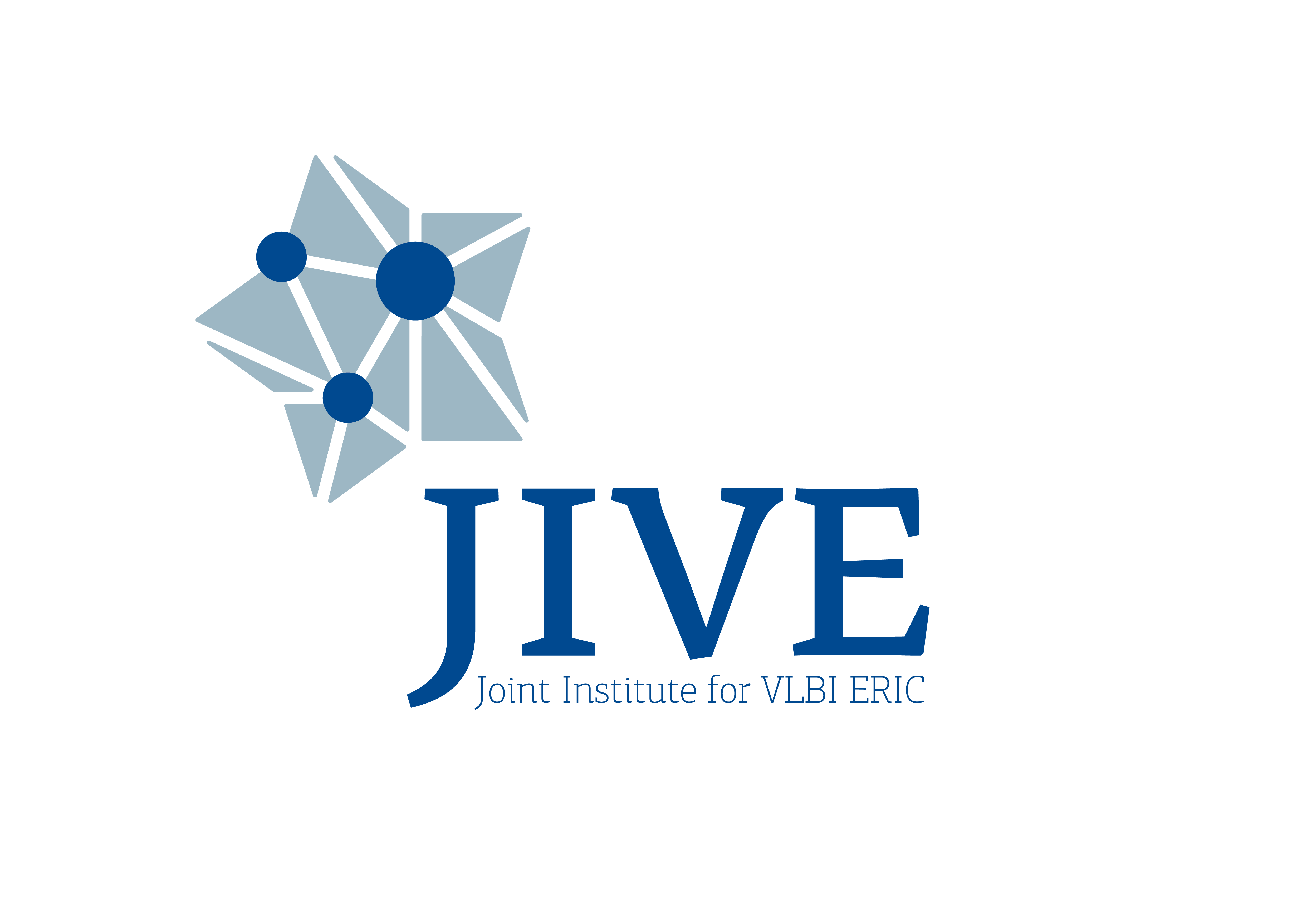
In February 2022, the Giant Metrewave Radio Telescope (India) achieved a new milestone in the path towards enabling their VLBI capabilities by completing two coordinated experiments conducted along with telescopes of the European VLBI Network (EVN), where Very Long Baseline Interferometry (VLBI) fringes with the GMRT were detected successfully.
A fringe is obtained when data from a pair of antennas are combined successfully to obtain a correlated signal while observing the same source. A pair of antennas is called a baseline. Longer baselines provide better angular detail or resolution, i.e. the ability to see finer and more detailed structure in the source being studied, due to the larger separation between the pair of antennas. The longest separation between a pair of GMRT antennas is 25 km. In the experiments with the EVN telescopes, signals from five different antennas - Westerbork (NL), Medicina (IT), Noto (IT), Onsala (SE), and Zelenchukskaya (RU) - including the co-added signals from a few antennas of the GMRT, were combined to synthesise a large telescope with baselines of ~6000 km length, in a technique called Very Long Baseline Interferometry (VLBI). The improved resolution provided by adding the GMRT antennas in this experiment is 3-10 milliarcseconds. The resolution provided by this joint GMRT- EVN array was equivalent to being able to see a small building on the surface of the moon!
Signals from 10 antennas from the GMRT were added (also called a phased array) to produce an output as if it were from a single antenna with 10 times the collecting area, giving high sensitivity. This signal was then combined with the four EVN telescopes to give fringes on these baselines with the GMRT. The images of the quasar 3C 454.3 obtained from this experiment on 14 February 2022, show the effect of combining the signal from the GMRT, in terms of the finer detail of the structure of this distant quasar. The experiment was repeated successfully on 21 February 2022. These tests establish the new capability of the upgraded GMRT for carrying out VLBI observations.

“The GMRT will add unique capabilities to our joint array, by making it possible to study galaxies on a broad range of spatial scales in a single observation”, adds JIVE Head of User Support Zsolt Paragi.
Commenting on this new initiative at the GMRT, NCRA Centre Director Prof Yashwant Gupta commented: “This success pave the way forward for the GMRT to join the global VLBI networks such as the EVN, the East Asian VLBI network, the Australian VLBI network, and in the long run, the SKA-VLBI network, and to make major contributions to study of the Universe using VLBI techniques.”
The target for these test VLBI observations was the well-known and bright Quasar called 3C454.3 which is located 12.3 billion light years away from Earth. Quasars are galaxies where enormous amounts of energy is released and powerful radio jets are launched when matter falls onto supermassive black holes. Prof. Preeti Kharb of the NCRA, who was part of this experiment, explains: “The EVN-only image of 3C454.3 shows an unresolved, single source of radio emission. The EVN+GMRT image, on the other hand, resolves this compact radio source into a "core-jet" structure with the radio jet pointing towards the west (in the sky) – seen as the faint extension of the contours towards the top-right side in the image with GMRT data included. This clearly brings out the importance of the GMRT in this kind of VLBI experiment.”
This "core-jet" structure has been observed in 3C454.3 with other VLBI arrays as well and is a well-known feature of VLBI images of Quasars. It indicates that the radio jet is being launched from the supermassive black hole at a speed close to the speed of light and is pointing towards Earth. This is "boosting" its brightness due to the Doppler effect; the counter-jet which is moving away from Earth is similarly Doppler-de-boosted, making it dimmer and therefore unobservable in VLBI images.
Dr. Viswesh Marthi of NCRA, who has contributed significantly to make VLBI possible with the GMRT, commented: “This success has been enabled by some technical developments and enhancements at the GMRT. Importantly, the addition of a Hydrogen maser as the frequency standard is a conscious step in our roadmap of keeping the GMRT at the forefront of low-frequency radio astronomy. Several key signal processing enhancements have enabled VLBI, and work is in progress to streamline our regular participation in VLBI science experiments in the future.” Dr. Marthi further added: “VLBI enables several interesting scientific possibilities for studying astrophysical phenomena on very small angular scales, like the structure and dynamics of the interstellar medium, pulsar emission and Fast Radio Bursts, besides the regular high-resolution imaging of radio jets such as this. Low-frequency VLBI is therefore a new direction towards which the GMRT will step up efforts to contribute at the global level.”
“We look forward to more extensive and scientifically meaningful VLBI experiments with the EVN, and are also in the process of joining the EVN as a formal member”, Prof Gupta mentioned. “Similar tests with other VLBI facilities in Australia, Japan etc are being conducted, and we look forward to being an important part of the global VLBI community very soon”, he added.
"VLBI is a unique technique built on international cooperation, at regional and also global scales, as is demonstrated by the participation of GMRT in the EVN and JIVE; the concept of a Global VLBI Alliance is more timely than ever", says Francisco Colomer, director of JIVE ERIC.
Additional Information
The Giant Metrewave Radio Telescope is operated by the National Centre for Radio Astrophysics of the Tata Institute of Fundamental Research.
The European VLBI Network (EVN) is an interferometric array of radio telescopes spread throughout Europe, Asia, South Africa and the Americas that conducts unique, high-resolution, radio astronomical observations of cosmic radio sources. Established in 1980, the EVN has grown into the most sensitive VLBI array in the world, including over 20 individual telescopes, among them some of the world's largest and most sensitive radio telescopes. The EVN is composed of 13 Full Member Institutes and 5 Associated Member Institutes.
The Joint Institute for VLBI ERIC (JIVE) has as its primary mission to operate and develop the EVN data processor, a powerful supercomputer that combines the signals from radio telescopes located across the planet. Founded in 1993, JIVE is since 2015 a European Research Infrastructure Consortium (ERIC) with seven member countries: France, Italy, Latvia, the Netherlands, United Kingdom, Spain and Sweden; additional support is received from partner institutes in China, Germany and South Africa. JIVE is hosted at the offices of the Netherlands Institute for Radio Astronomy (ASTRON) in the Netherlands.
Images
Primary image
GMRT Telescope. Credit: GMRT Telescope.
Secondary image
Left: The radio image of the quasar 3C454.3 at 1442 MHz with EVN telescopes, excluding the GMRT. Right: Image of the same radio source, now including the GMRT baselines. Note the improvement in resolution which allows the detailed structure of the jet emission from the quasar to become detectable (in the top right side in the image with the GMRT data).
Contact
Visweshwar R. Marthi
Fellow-D
National Centre for Radio Astrophysics
Tata Institute of Fundamental Research
viswesh@ncra.tifr.res.in
Francisco Colomer
JIVE Director
Joint Institute for VLBI ERIC (JIVE)
colomer@jive.eu
Benito Marcote
JIVE Support Astronomer
Joint Institute for VLBI ERIC (JIVE)
marcote@jive.eu
Jorge Rivero González
JIVE Science Communications Officer
Joint Institute for VLBI ERIC (JIVE)
rivero@jive.eu
